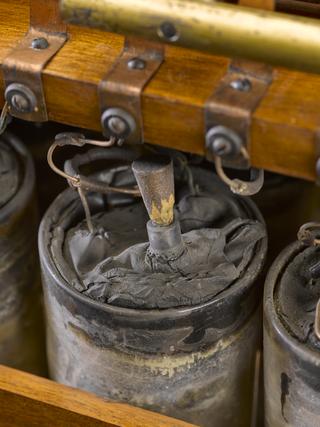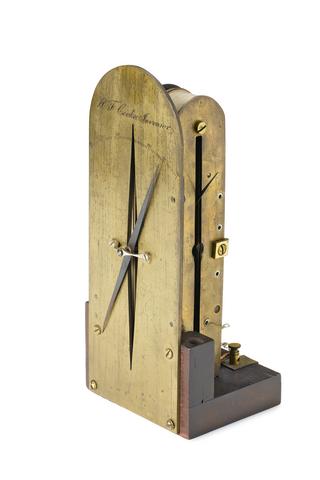

Box of C.B. Brown porcelain cleats, 25 pairs.
Part of the Bob Gray collection of electrical objects.
Cleat wiring systems are suitable for temporary wiring situations. Cleats come in various colours and nonconductive materials. They are used to hold wires in place. Although the conductive wire used is insulated, it is left exposed. It is a relatively cheap and quick solution, but the wires are vulnerable damage. Mostly used at a construction stage of a building. Porcelain was a popular material for many types of electrical insulators until the 1930s when thermosetting plastics such as Bakelite started to take their place. By the 1930s a greater emphasis on electrical safety meant that cables for industry were enclosed in steel conduit or trunking.
Information on the box state: The porcelain cleats (Ref. B.P.C.1) are suitable for weather proof distribution cables 3/.036" twin up to and including 7/.044" twin. T.R.S. cables up to and including 7/.036" twin flat or 7/.029" 3-core flat.
Details
- Category:
- Electricity Supply
- Object Number:
- Y2012.15.3
- Measurements:
-
Overall: 88 mm x 46 mm, 109 mm, 55 g
- type:
- cleat
- credit:
- Mr Robert Gray




